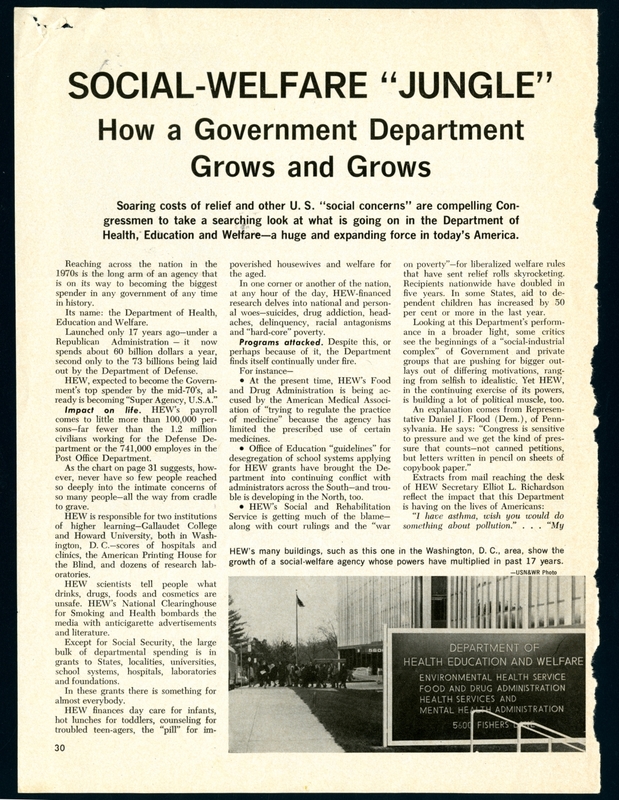Welfare Implementations
As always, Oveta Culp Hobby did her research on the current problems with welfare and social security in the nation. She sought specialized consultants in the sector so that she could have the most expert opinions on amendments to social security. Through her research, Hobby found that in 1954, 8% of the population was over the age of 65. She found that the aging population would be growing and that the number of births had also been rising at a very fast rate.1 Hobby identified that there was an issue in keeping up with the elderly population as well as the future population that would come from the baby-boom that social security would have to support. In approving the amendments and signing the amendments into law to the Old-Age and Survivors Insurance system, Eisenhower said that the legislation, approved by a Republican Congress would be “build a stronger and better America.”2 Hobby called the amendments a “social gain.”
The Republican and Democratic parties compromised on these amendments that were estimated to extend to supplement the income of 7 million working people.The Democratic party wanted to extend to more people while the Republican party wished to be more conservative in coverage. Benefits were increased for 6.6 million people (Figure 1, 2). In 1954, the benefits were so low for those enrolled in the program often had to receive other public assistance benefits to pay for basic needs. The amendments afterwards were able to bring in a lot of self-employed farm employees. The biggest increase in the number of people covered by the Old-Age and Survivors Insurance system was the self-employed farm employees. The number of people covered by the insurance system included members of the armed forces who were given free credit earnings of $160 per month. Coverage under the amendments also became elective for tax-exempt organizations and charitable organizations. As soon as the 1954 amendments were signed by Eisenhower, the Department of HEW became incredibly busy as it had to immediately send out checks to the 6.6 million people added to the roll of OASI. Minimum benefits from the OASI payroll were increased from $25 to $30 a month. Retired workers’ increases were $5 a month. In today’s dollars, the increases were almost $50 a month.
The 1954 amendments also added a “drop-out” amendment such that if workers were not earning much, they could drop out of the program for four to five years. Thus, in the future, a worker’s low earnings would not affect how much they could earn in future years from the OASI payroll.3 Another amendment from the 1954 legislation was that a person who had a disability for more than six months, could apply to “freeze” his credits and not have those months/years when he or she was not working affect his or her future pay-outs. Overall, the 1954 amendments greatly expanded the OASI payroll, greatly increasing the number of people covered by social security.

